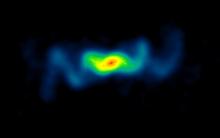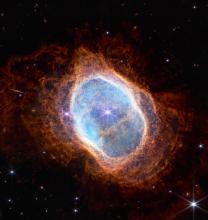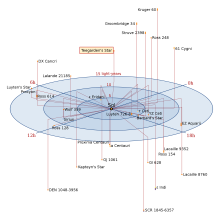Listen to today's episode of StarDate on the web the same day it airs in high-quality streaming audio without any extra ads or announcements. Choose a $8 one-month pass, or listen every day for a year for just $30.
You are here
Moon and Spica
Spica is one of the brighter stars in the night sky, so it’s always easy to pick out. But it’s especially easy to find tonight, because it huddles especially close to the Moon. They climb into good view after midnight, and remain in view the rest of the night.
Spica looks like a single pinpoint. In reality, it’s a system of two massive stars. They’re so close to one another that their light blurs together.
The stars orbit each other once every four days. They’re just a few million miles apart. But their orbit is a bit lopsided, so the distance changes. And the two stars rotate at different rates. The larger star spins almost three times faster than its slightly smaller companion.
If given enough time, the stars would come into better synchronization. Their orbit would become more circular. And they’d spin at such a rate that the same hemisphere of each star would always face the other.
The key to that is “if given enough time.” The larger star is so massive that it’s destined to explode as a supernova. And given its age — about 12 million years — the “boom” probably isn’t too far away.
Before the star explodes, it’s likely to blow a lot of gas into space, decreasing its mass. That’ll change the stars’ orbit. And when it does explode, it’ll lose most of its mass, changing the orbit even more. It’s even possible that the two stars will go their separate ways — ending a close pairing of massive stars.
Script by Damond Benningfield






